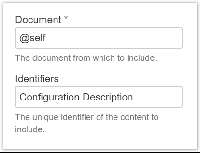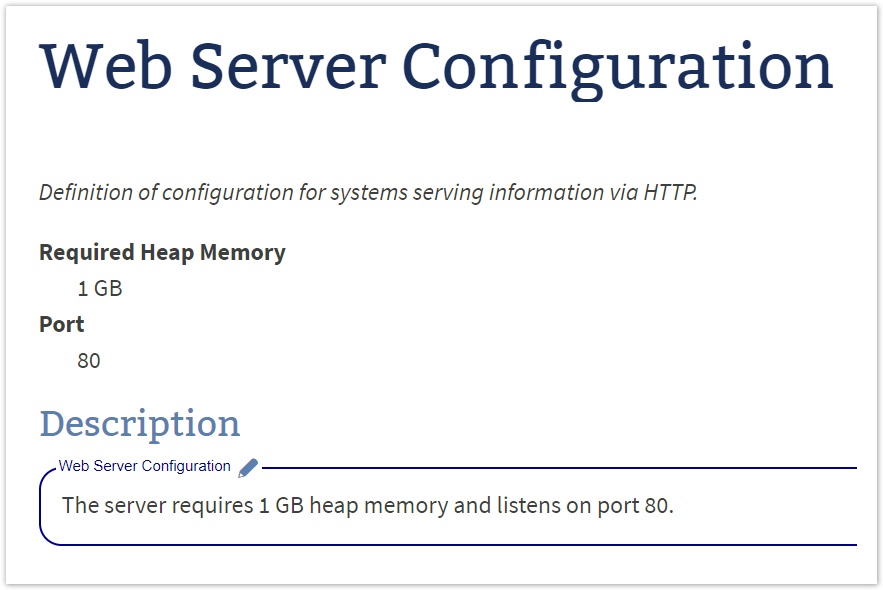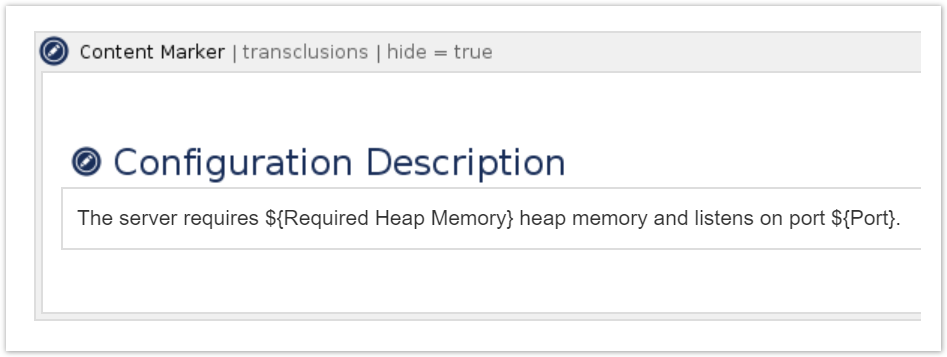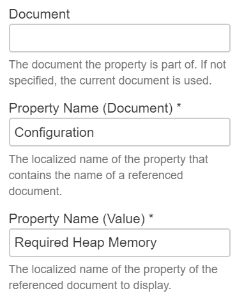For simplicity the Configuration doctype defines two properties and a text with variables, we call placeholders. 
There is a text with placeholders referencing the values from these properties. 
Note that this section is hidden. To actually render the section where the two placeholders are replaced with actual property values, a transclusion is required. 
The following parameters of the Transclusion Macro are set. 
First reference the current document by the @self reference (this is especially important for template authors). Second it is also important to define the section to transclude (otherwise there will be a recursion detected with an error box). 
Last but not least you need to check the box for Apply Document Properties to actually use the document's properties for the placeholders. So this is essentially the document as seen by the document authors. 
Note that the box around the contents of the Description section is only visible to users of Confluence with write access to the document. It is a marker to remind authors that the content is transcluded. Also note that you may hide the properties since the information is presented in the Description section. | 


















